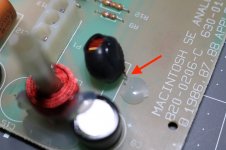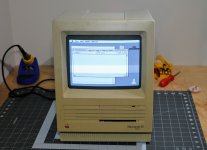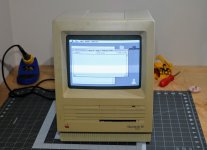PotatoFi
Well-known member
Hey 68kmla! Newcomer here, I hope this type of post is appropriate. I've been looking for a good compact Macintosh community... this looks like it might be the one!
I've been wanting to own a compact Macintosh for a couple of years now, and I decided to tackle a restoration project by buying a project machine. I ended up getting a Macintosh SE FDHD in nice physical condition, but while it chimes and sounds like it's booting, the display is completely dark.
Here's what I've tried so far:
I've been wanting to own a compact Macintosh for a couple of years now, and I decided to tackle a restoration project by buying a project machine. I ended up getting a Macintosh SE FDHD in nice physical condition, but while it chimes and sounds like it's booting, the display is completely dark.
Here's what I've tried so far:
- Checked brightness knob
- Checked CRT neck board for proper seating (did not fully remove and reseat)
- Reflow and check J1 connector on the analog board
- Test resistor at R22 (Per Dead Mac Scrolls, page 150)
- Measured voltages at the floppy connector, and found 12.00v, 5.00v, and -11.84v
- Checked all analog to logic wires for continuity (Per Dead Mac Scrolls, page 26)
- Checked for CRT glow at the neck, and there is a tiny orange glow (but I'm not exactly sure what to look for)
- Replaced PRAM battery (unrelated, just maintenance)
- Blew all of the dust out (unrelated, just maintenance)
- Did retrobrite on the case and it came out beautifully, looking forward to retrobiting the front but I'm waiting until the machine works
Last edited by a moderator:





